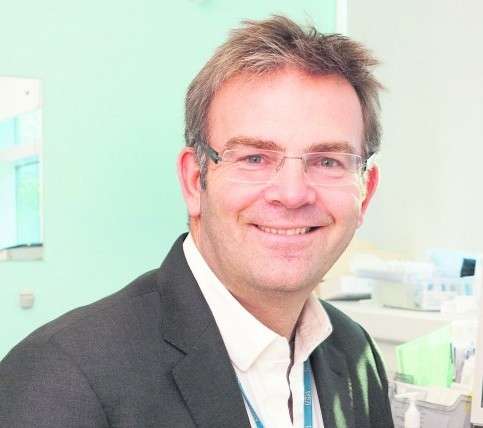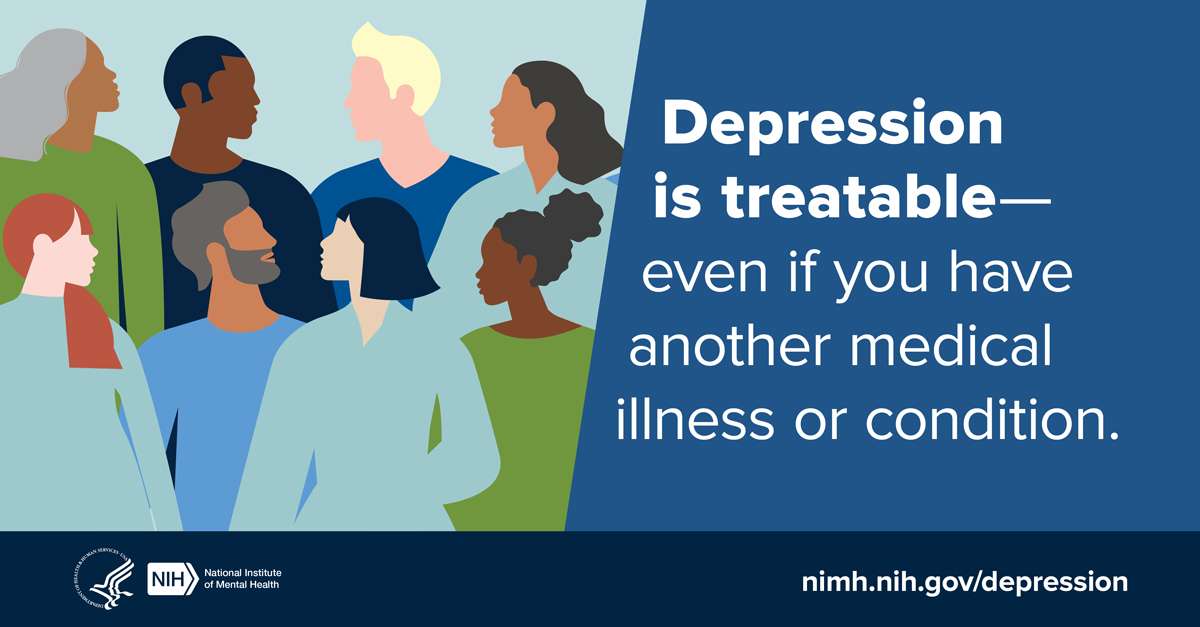Firstly, The answer to the question where to access HIFU treatment is a very short list in the UK. However, it should be noted that Consultant Urological Surgeons who offer HIFU to their patients will also offer Active Surveillance. Further they will be PROMIS compliant, using mpMRI for diagnosis as well as transperineal biopsy to assess the cancer cells.
Offering these services is a prerequisite to being able to offer HIFU as a therapy. Further, NHS reimbursement rates for HIFU are very low and do not cover the cost of provision of a service.
As of today, there are only a few centres offering HIFU, but as the results of the recent HIFU research, the CHRONOS study, has had such encouraging results, more centres and Urologists are likely to offer HIFU in the near future and the NHS reimbursement rate is likely to increase.
Further a charity, Prost8 has launched a campaign to raise money, with the specific purpose of providing focal therapy (HIFU and Crotherapy) at 12 centres around the country.
This page will be updated as these centres ‘come on line’ .We strongly encourage you to donate.
Prostate cancer is the most common cancer in men in the UK, with over 40,000 new cases diagnosed every year. This is Chris’ story.

“Talking to the team for the first time gave me real confidence, masses more knowledge and I felt that I was becoming part of a group rather than ‘The Patient’”
Chris was initially diagnosed with prostate cancer in 2011 although he did not have any notable symptoms at this time. His diagnosis was made after a random blood test that had been offered to him through an email invitation to all of the men at his place of work. It later turned out that this had been a very important decision. The blood test revealed that his PSA (prostate-specific antigen) level was raised at a score of 12 – which can be an indication that prostate cancer might be present. This was the moment that Chris’s experience with prostate cancer truly began.
Chris attended his local hospital for a TRUS biopsy – a commonly use procedure that helps establish if cancer is present. Soon after he was called in to discuss the options for a diagnosis of 3+3 gleason level prostate cancer. “At that point I felt I really had to learn about the disease in depth so I could take control of my situation. I had the feeling that knowledge would provide me with power in fighting the whole thing”.
Chris was given a number of options of how next to proceed. “All of my options had pros and cons and I found myself evaluating what the different clinicians had to told me”. Ultimately he would have to make his own decision about which way to go. “My advice at this early stage is to talk to everyone and to be referred everywhere – leave no stone unturned before you decide which way to go”.
It was at this stage that Chris first came across UCLH and the work of Professor Mark Emberton and his team, and discovered the existence of clinical trials. Fortunately their work was at a stage where they were looking to recruit men with Chris’s level of disease, so it became a real option for him. “Talking to the team for the first time gave me real confidence, masses more knowledge and I felt that I was becoming part of a group rather than ‘The Patient’. Of course I am a patient, but the pathway involvement at UCLH feels very different. There is no ‘them and me’, but more a group with a common aim, seemingly limitless advice and information provided with a personalised approach”.
The treatment that Chris decided upon was high intensity focused ultrasound (HIFU) therapy. This is a targeted therapy for prostate cancer which uses high frequency ultrasound waves to destroy cancer cells in the prostate. It aims to provide treatment with fewer side effects than some others, and is one of the only treatment pathways involving partial effect on the prostate which is targeted directly at the affected area (much like many other cancers can now be targeted).
HIFU is a trial treatment and the nature of clinical trials was carefully explained to Chris. “The nice thing for me was feeling a part of how medical science makes progress, and how many could benefit in the future. Long discussions about the whole process were frequently had and I have definitely learned a huge amount”.
Chris’s treatment pathway involved a variety of scanning followed by the initial procedure. This was complemented by regular template biopsies. None of Chris’s treatment has involved anything longer than an overnight stay in hospital.
“Throughout the whole process my confidence in fighting the disease has been strongly backed up by the team and everyone at UCLH, and I’ve always been very grateful for that. I think the psychological side of diagnoses and treatments can often be given insufficient appreciation and time within the pathway. There is plenty of support outside of that via the various excellent charities and groups available”.
“I will see how it goes from here, with the key thing being the consistency and dedication of the UCLH team into the future”.
The clinical trial took place over three years so Chris has been in London every three months for progress discussion, scans and tests. “I live in the Midlands near Worcester, but every penny of train fare has been worth it! I’ve always known the treatment isn’t widely available, and the feeling is always there that I am being looked after by a dedicated and very skilled team and a part of valuable research”.
Chris is not yet quite out of the woods and has had some follow up cryotherapy as part of the pathway. His PSA level is now massively reduced. “I will see how it goes from here, with the key thing being the consistency and dedication of the UCLH team into the future”.
Outside of the treatment Chris has been inspired to try to raise money for UCLH and PCUK through cycling events. He has always been a keen cyclist and the treatment hasn’t affected that at all. He has also used his experience with clinical trials to help PCUK on their Grant Advisory Panel (“another story!”)
“My experience has made me appreciate even more the work, dedication and technical progress being achieved by the NHS, often in difficult financial circumstances. No one should be in any doubt it’s by far the best in the world. Had I been ill in many other countries things would have been very different, so I’m grateful for that bigger picture too”.
In November 2015, the prostate cancer team at UCLH won the ‘Acute Sector Innovation’ Health Service Journal (HSJ) award for innovation in diagnosing and treating prostate cancer. Chris joined the team at the awards ceremony to collect the award. “The award is a huge accolade for UCLH and the team and is richly deserved. I’m really proud and lucky to be receiving the most innovative treatment in the UK!”
Treatment for prostate cancer will depend on your individual circumstances. For many people with prostate cancer, no treatment will be necessary.
When treatment is necessary, the aim is to cure or control the disease so it affects everyday life as little as possible and does not shorten life expectancy.
Sometimes, if the cancer has already spread, the aim is not to cure it but to prolong life and delay symptoms.
Your cancer care team
People with cancer should be cared for by a multidisciplinary team (MDT). This is a team of specialists who work together to provide the best care and treatment.
The team often consists of specialist cancer surgeons, oncologists (radiotherapy and chemotherapy specialists), radiologists, pathologists, radiographers and specialist nurses.
Other members may include physiotherapists, dietitians and occupational therapists. You may also have access to clinical psychology support.
When deciding what treatment is best for you, your doctors will consider:
- the type and size of the cancer
- what grade it is
- your general health
- whether the cancer has spread to other parts of your body
Good prostate cancer care
Your MDT will be able to recommend what they feel are the best treatment options, but ultimately the decision is yours.
You should be able to talk with a named specialist nurse about treatment options and possible side effects to help you make a decision.
You should also be told about any clinical trials you may be eligible for.
If you have side effects from treatment, you should be referred to specialist services (such as continence services) to help stop or ease these side effects.
Prostate cancer risk groups
Prostate cancer can be categorised into one of 5 risk groups in the Cambridge Prognostic Group (CPG).
Doctors will look at the Grade Group (also called the Gleason score), prostate specific antigen (PSA) level and tumour stage to decide which CPG group the prostate cancer is.
The risk group of the cancer will help determine which types of treatments will be necessary.
If prostate cancer is diagnosed at an early stage, the chances of survival are generally good.
Further information
- Cancer Research UK: Prostate cancer risk groups and the Cambridge Prognostic Group (CPG)
- What do cancer stages and grades mean?
Watchful waiting or active surveillance
Watchful waiting and active surveillance are different approaches to keeping an eye on the cancer and starting treatment only if it shows signs of getting worse or causing symptoms.
Watchful waiting
Watchful waiting is often recommended for older men when it’s unlikely the cancer will affect their natural lifespan.
If the cancer is in its early stages and not causing symptoms, you may decide to delay treatment and wait to see if any symptoms of progressive cancer develop.
Watchful waiting may also be recommended if your general health means you’re unable to receive any form of treatment.
Active surveillance
Active surveillance aims to avoid unnecessary treatment of harmless cancers while still providing timely treatment for those who need it.
Active surveillance involves having regular PSA tests, MRI scans and sometimes biopsies to ensure any signs of progression are found as early as possible.
If these tests reveal the cancer is changing or progressing, you can then make a decision about further treatment.
Surgically removing the prostate gland (radical prostatectomy)
A radical prostatectomy is the surgical removal of your prostate gland. This treatment is an option for curing prostate cancer that has not spread beyond the prostate or has not spread very far.
Like any operation, this surgery carries some risks, such as urinary incontinence and erectile dysfunction.
In extremely rare cases, problems arising after surgery can be fatal.
It’s possible that prostate cancer can come back again after treatment. Your doctor should be able to explain the risk of your cancer coming back after treatment, based on things like your PSA level and the stage of your cancer.
Studies have shown that radiotherapy after prostate removal surgery may increase the chances of a cure, although research is still being carried out into when it should be used after surgery.
After a radical prostatectomy, you’ll no longer ejaculate during sex. This means you will not be able to have a child through sexual intercourse.
You may want to ask your doctors about storing a sperm sample before the operation so it can be used later for in vitro fertilisation (IVF).
Further information
- Prostate Cancer UK: radical prostatectomy
- Macmillan: radical prostatectomy
Radiotherapy
Radiotherapy involves using radiation to kill cancerous cells.
This treatment is an option for curing prostate cancer that has not spread beyond the prostate or has not spread very far.
Radiotherapy can also be used to slow the progression of prostate cancer that’s spread and relieve symptoms.
You’ll normally have radiotherapy as an outpatient in a hospital near you. It’s done in short sessions for 5 days a week, usually for 4 to 8 weeks.
There are side effects associated with radiotherapy.
You may receive hormone therapy before undergoing radiotherapy to increase the chance of successful treatment.
Hormone therapy may also be recommended after radiotherapy to reduce the chances of cancerous cells returning.
Short-term effects of radiotherapy can include:
- discomfort around your bottom
- diarrhoea
- loss of pubic hair
- tiredness
- inflammation of the bladder lining, which can cause pain when peeing and needing to go more often (cystitis)
Long-term side effects of radiotherapy can include erectile dysfunction (impotence).
Radiotherapy is also slightly more likely than other treatments to cause moderate-to-severe back passage problems, such as diarrhoea, bleeding and discomfort.
It’s possible that prostate cancer can come back again after treatment. Your doctor should be able to explain the risk of your cancer coming back after treatment, based on things like your PSA level and the stage of your cancer.
Some hospitals now offer new minimally invasive treatments if radiotherapy fails to work, sometimes as part of a clinical trial.
These new treatments are called brachytherapy, high-intensity focused ultrasound (HIFU) and cryotherapy.
These treatments have fewer side effects, but the long-term outcomes are not yet known. There’s a higher risk of complications from surgery in people who have previously had radiotherapy.
If these treatments are not appropriate, medicine is usually used to control the cancer.
Further information
- Macmillan: radiotherapy for prostate cancer
Brachytherapy
Brachytherapy is a form of radiotherapy where the radiation dose is delivered inside the prostate gland. It’s also known as internal or interstitial radiotherapy.
The radiation can be delivered using a number of tiny radioactive seeds surgically implanted into the tumour. This is called low dose rate brachytherapy.
The radiation can also be delivered through thin, hollow needles placed inside the prostate. This is called high dose rate brachytherapy.
The idea behind this method is to deliver a high dose of radiation to the prostate while minimising damage to other tissues.
But the risk of urinary problems is higher than with radiotherapy, although the risk of sexual dysfunction is the same. The risk of bowel problems is slightly lower.
Further information
- Cancer Research UK: internal radiotherapy (brachytherapy) for prostate cancer
Hormone therapy
Hormone therapy is often used in combination with radiotherapy. For example, you may receive hormone therapy before undergoing radiotherapy to increase the chance of successful treatment.
It may also be recommended after radiotherapy to reduce the chances of cancerous cells returning.
Hormone therapy alone does not cure prostate cancer. It can be used to slow the progression of advanced prostate cancer and relieve symptoms.
Hormones control the growth of cells in the prostate. In particular, prostate cancer needs the hormone testosterone to grow.
The purpose of hormone therapy is to block the effects of testosterone, either by stopping its production or by stopping your body being able to use testosterone.
Hormone therapy can be given as:
- injections to stop your body making testosterone
- tablets to block the effects or reduce the production of testosterone
- a combination of both
The main side effects of hormone treatment are caused by their effects on testosterone. They usually go away when treatment stops.
They include reduced sex drive and erectile dysfunction (this is more common with the injections than with the tablets).
Other possible side effects include:
- hot flushes
- sweating
- weight gain
- swelling and tenderness of the breasts
An alternative to hormone therapy is to surgically remove the testicles (orchidectomy). This does not cure prostate cancer, but by removing the testosterone it controls the growth of the cancer and its symptoms.
Further information
- Cancer Research UK: hormone therapy for prostate cancer
Trans-urethral resection of the prostate (TURP)
TURP is a procedure that can help relieve pressure from the tube that carries urine from your bladder out of your penis (urethra) to treat any problematic symptoms you may have with urination.
It does not cure the cancer.
During TURP, a thin metal wire with a loop at the end is inserted into your urethra and pieces of the prostate are removed.
This is carried out under general anaesthetic or a spinal anaesthetic (epidural).
Find out more about TURP
High-intensity focused ultrasound (HIFU)
HIFU is sometimes used to treat localised prostate cancer that has not spread beyond the prostate.
An ultrasound probe inserted into the bottom (rectum) releases high-frequency sound waves through the wall of the rectum.
These sound waves kill cancer cells in the prostate gland by heating them to a high temperature.
The risk of side effects from HIFU is usually lower than other treatments.
But possible effects can include erectile dysfunction or urinary incontinence. Back passage problems are rare.
A fistula, where an abnormal channel forms between the urinary system and the rectum, is also rare.
This is because the treatment targets the cancer area only and not the whole prostate.
But HIFU treatment is still going through clinical trials for prostate cancer. In some cases, doctors can carry out HIFU treatment outside of clinical trials.
HIFU is not widely available and its long-term effectiveness has not yet been conclusively proven.
Further information
- Cancer Research UK: high-intensity focused ultrasound (HIFU) for prostate cancer
Cryotherapy
Cryotherapy is a method of killing cancer cells by freezing them. It’s sometimes used to treat localised prostate cancer that has not spread beyond the prostate gland.
Tiny probes called cryoneedles are inserted into the prostate gland through the wall of the rectum. They freeze the prostate gland and kill the cancer cells, but some normal cells also die.
The aim is to kill cancer cells while causing as little damage as possible to healthy cells.
The side effects of cryotherapy can include:
- erectile dysfunction
- incontinence
It’s rare for cryotherapy to cause a fistula or problems with the back passage.
Cryotherapy is still undergoing clinical trials for prostate cancer. In some cases, doctors can carry out cryotherapy treatment outside of clinical trials.
It’s not widely available and its long-term effectiveness has not yet been conclusively proven.
Treating advanced prostate cancer
If the cancer has reached an advanced stage, it’s no longer possible to cure it. But it may be possible to slow its progression, prolong your life and relieve symptoms.
Treatment options include:
- radiotherapy
- hormone treatment
- chemotherapy
If the cancer has spread to your bones, medicines called bisphosphonates may be used. Bisphosphonates help reduce bone pain and bone loss.
Chemotherapy
Chemotherapy is often used to treat prostate cancer that’s spread to other parts of the body (metastatic prostate cancer).
Chemotherapy destroys cancer cells by interfering with the way they multiply. It does not cure prostate cancer but can keep it under control to help you live longer.
It also aims to reduce symptoms, such as pain, so everyday life is less affected.
The main side effects of chemotherapy come from how it affects healthy cells, such as immune cells.
They include:
- infections
- tiredness
- hair loss
- a sore mouth
- loss of appetite
- feeling sick (nausea)
- being sick (vomiting)
Many of these side effects can be prevented or controlled with other medicines that your doctor can prescribe.
Steroids
Steroid tablets are used when hormone therapy no longer works because the cancer is resistant to it. This is called castration-resistant prostate cancer (CRPC).
Steroids can be used to try to shrink the tumour and stop it growing. The most effective steroid treatment is dexamethasone.
Other medical treatments
There are a number of new medicines that could be used if other types of hormone therapy and chemotherapy fail, or alongside other types of hormone therapy.
These include new types of hormone therapy such as abiraterone, apalutamide, darolutamide and enzalutamide. They work by stopping the body from producing testosterone, or blocking the effect of testosterone on prostate cancer cells. This can help delay the spread of prostate cancer.
Your medical team can tell you if these are suitable and available for you.
Deciding against treatment
You may decide against treatment for prostate cancer, particularly if you are at an age where you feel treating the cancer is unlikely to significantly extend your life expectancy.
The decision is entirely yours and your care team will respect it.
If you decide not to have treatment, your GP and hospital team will still give you support and pain relief. This is called end of life care (palliative care).
Support is also available for your family and friends.
Further information
- End of life care
Page last reviewed: 18 October 2021
Next review due: 18 October 2024



